 W
WA lithophane is an etched or molded artwork in very thin translucent porcelain that can be seen clearly only when back lit with a light source. It is a design or scene in intaglio that appears "en grisaille" tones.
 W
WPorcelain is a ceramic material made by heating materials, generally including a material like kaolin, in a kiln to temperatures between 1,200 and 1,400 °C. The strength, and translucence of porcelain, relative to other types of pottery, arises mainly from vitrification and the formation of the mineral mullite within the body at these high temperatures. Though definitions vary, porcelain can be divided into three main categories: hard-paste, soft-paste and bone china. The category that an object belongs to depends on the composition of the paste used to make the body of the porcelain object and the firing conditions.
 W
WBát Tràng porcelain and pottery is a type of ceramic made in the village of Bát Tràng, in the suburban outskirts of the northern Vietnamese city of Hanoi. The village is located in an area rich in clay suitable for making ceramic. Bát Tràng ceramics are considered some of the best known porcelain products in Vietnam besides those of Chu Đậu, Đồng Nai, Phu Lang, and Ninh Thuận. The history of ceramic making in this village can be traced back as far as the 14th century AD.
 W
WBenjarong ware is a kind of painted Thai ceramics porcelain. While the name literally means "five colours," it is a figurative description and actual decoration can have anywhere between three and eight colours. For the decoration, repetitive forms, usually geometric or flower-based, are used. A design is usually named after the decoration base name and a background color.
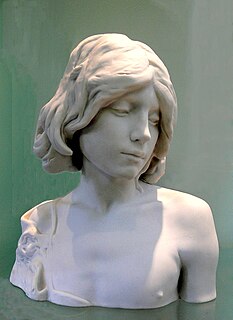 W
WBiscuit porcelain, bisque porcelain or bisque is unglazed, white porcelain treated as a final product, with a matte appearance and texture to the touch. It has been widely used in European pottery, mainly for sculptural and decorative objects that are not tableware and so do not need a glaze for protection.
 W
W"Blue and white pottery" covers a wide range of white pottery and porcelain decorated under the glaze with a blue pigment, generally cobalt oxide. The decoration is commonly applied by hand, originally by brush painting, but nowadays by stencilling or by transfer-printing, though other methods of application have also been used. The cobalt pigment is one of the very few that can withstand the highest firing temperatures that are required, in particular for porcelain, which partly accounts for its long-lasting popularity. Historically, many other colours required overglaze decoration and then a second firing at a lower temperature to fix that.
 W
WBlue Onion is a porcelain tableware pattern for dishware originally manufactured by Meissen porcelain since the 18th century, and since the last 19th Century has been copied by other companies.
 W
WBone china is a type of porcelain that is composed of bone ash, feldspathic material, and kaolin. It has been defined as "ware with a translucent body" containing a minimum of 30% of phosphate derived from animal bone and calculated calcium phosphate. Bone china is the strongest of the porcelain or china ceramics, having very high mechanical and physical strength and chip resistance, and is known for its high levels of whiteness and translucency. Its high strength allows it to be produced in thinner cross-sections than other types of porcelain. Like stoneware it is vitrified, but is translucent due to differing mineral properties.
 W
WCapodimonte porcelain is porcelain created by the Capodimonte porcelain manufactory, which operated in Naples, Italy, between 1743 and 1759. Capodimonte is the most outstanding factory for early Italian porcelain, the Doccia porcelain of Florence being the other main Italian factory. Capodimonte is most famous for its moulded figurines.
 W
WCeladon is a term for pottery denoting both wares glazed in the jade green celadon color, also known as greenware, and a type of transparent glaze, often with small cracks, that was first used on greenware, but later used on other porcelains. Celadon originated in China, though the term is purely European, and notable kilns such as the Longquan kiln in Zhejiang province are renowned for their celadon glazes. Celadon production later spread to other parts of East Asia, such as Japan and Korea as well as Southeast Asian countries such as Thailand. Eventually, European potteries produced some pieces, but it was never a major element there. Finer pieces are in porcelain, but both the color and the glaze can be produced in stoneware and earthenware. Most of the earlier Longquan celadon is on the border of stoneware and porcelain, meeting the Chinese but not the European definitions of porcelain.
 W
WA ceramics museum is a museum wholly or largely devoted to ceramics, usually ceramic art. Its collections may also include glass and enamel, but typically concentrate on pottery, including porcelain. Most national collections are in a more general museum covering all of the arts, or just the decorative arts. However, there are a number of specialized ceramics museums, with some focusing on the ceramics of just one country, region or manufacturer. Others have international collections, which may be centered on ceramics from Europe or East Asia or have a more global emphasis.
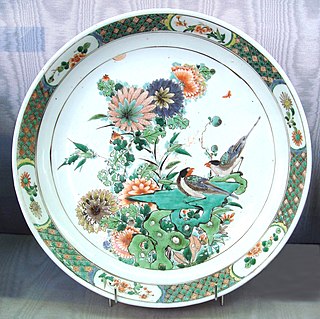 W
WChina painting, or porcelain painting, is the decoration of glazed porcelain objects such as plates, bowls, vases or statues. The body of the object may be hard-paste porcelain, developed in China in the 7th or 8th century, or soft-paste porcelain, developed in 18th-century Europe. The broader term ceramic painting includes painted decoration on lead-glazed earthenware such as creamware or tin-glazed pottery such as maiolica or faience.
 W
WChintzware, or chintz pottery, describes chinaware and pottery covered with a dense, all-over pattern of flowers or, less often, other objects. It is a form of transferware where the pattern is applied by transfer printing as opposed to the more traditional method of painting by hand.
 W
WCozzi porcelain is porcelain made by the Cozzi factory in Venice, which operated between 1764 and 1812. Production included sculptural figurines, mostly left in plain glazed white, and tableware, mostly painted with floral designs or with figures in landscapes and buildings, in "bright but rough" colours. They were rather derivative, drawing from Meissen porcelain in particular in the early years.
 W
WThe Koninklijke Porceleyne Fles N.V. is a Dutch manufacturer of Delft Blue earthenware, headquartered in Delft, the Netherlands. It is the only remaining factory out of 32 that were established in Delft during the 17th century. Today, the company has been active for over 360 years without interruption.
 W
WDental porcelain is a dental material used by dental technicians to create biocompatible lifelike dental restorations, such as crowns, bridges, and veneers. Evidence suggests they are an effective material as they are biocompatible, aesthetic, insoluble and have a hardness of 7 on the Mohs scale. For certain dental prostheses, such as three-unit molars porcelain fused to metal or in complete porcelain group, zirconia-based restorations are recommended.
 W
WThe Doccia porcelain manufactory, at Doccia, a frazione of Sesto Fiorentino, near Florence, was in theory founded in 1735 by marchese Carlo Ginori near his villa, though it does not appear to have produced wares for sale until 1746. It has remained the most important Italian porcelain factory ever since.
 W
WJulius Dressler was a noted Bohemian ceramics manufacturing company that operated from the late 19th century until the end of World War II.
 W
WDulyovo porcelain works is one of the most famous Russian and former Soviet porcelain manufacturers. Its products are better known as Dulevo porcelain. The works were founded in the Dulyovo wasteland in 1832 by merchant Terenti Kuznetsov from Gzhel. Notable elegant modern designs were created by the Hungarian-born Eva Zeisel, before she fell foul of Stalin. Mikhail Mikhailovich Adamovich also designed for the factory (1927–33).
 W
WA factory mark is a symbolic marking affixed by manufacturers on their productions in order to authenticate them. Numerous factory marks are known throughout the ages, and are essential in determining the provenance or dating of productions.
 W
WFrench porcelain has a history spanning a period from the 17th century to the present. The French were heavily involved in the early European efforts to discover the secrets of making the hard-paste porcelain known from Chinese and Japanese export porcelain. They succeeded in developing soft-paste porcelain, but Meissen porcelain was the first to make true hard-paste, around 1710, and the French took over 50 years to catch up with Meissen and the other German factories.
 W
WA garniture is a number or collection of any matching, but usually not identical, decorative objects intended to be displayed together. Frequently made of metal, ormolu, often with gilded wood stands, porcelain, garnitures became popular during the latter half of the 17th century and remained in vogue throughout the 19th century. A very common placement is on the mantelpiece over a fireplace, but garnitures were very often placed on various pieces of furniture, and on ledges or niches around the walls of a room, especially over doors or above fireplaces. Garnitures may contain pieces made together with a view to being used as a set, or may be "assembled" by the decorator from pieces of different origin.
 W
WGustavsberg is a Swedish porcelain company that originated in 1826. It broke up in the 1990s and was sold off in pieces, to the dismay of residents of the Gustavsberg area, but artisans continued producing ceramics and household porcelain in the Gustavsberg tradition. One of Gustavsberg's most famous collections is the "Nobel Porcelain" produced in 1994. One such artisan was Josef Ekberg, who, even as a young man, created many pieces for Gustavsberg.
 W
WHard-paste porcelain, sometimes "true porcelain", is a ceramic material that was originally made from a compound of the feldspathic rock petuntse and kaolin fired at very high temperature, usually around 1400 °C. It was first made in China around the 7th or 8th century, and has remained the most common type of Chinese porcelain.
 W
WIn pottery hausmaler is a term for the artist, the style, and the pieces in hausmalerei, the process of buying pieces of pottery as plain "blanks", and then painting them in small workshops, or the homes of painters, before a final firing. In European pottery of the 17th to 19th centuries this was at certain times and places a significant part of production, and the decoration could be of very high quality.
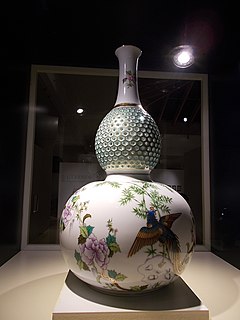 W
WThe Herend Porcelain Manufactory is a Hungarian manufacturing company, specializing in luxury hand painted and gilded porcelain. Founded in 1826, it is based in the town of Herend near the city of Veszprém.
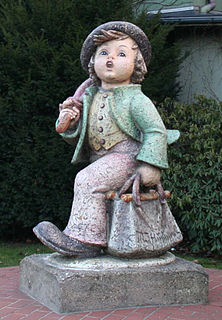 W
WHummel figurines are a series of porcelain figurines based on the drawings of Sister Maria Innocentia Hummel, O.S.F.
 W
WJoseon white porcelain or Joseon baekja refers to the white porcelains produced during the Joseon dynasty (1392-1910).
 W
WLe Nove porcelain was made in the 18th century in the town now called Nove, near Bassano, then in the Republic of Venice's mainland territories, the terrafirma. It was made at a factory owned by Pasquale Antonibon, who was already making fine maiolica in fashionable styles, which continued to be made alongside the porcelain. Production of porcelain began in 1762 and ended when Antonibon died in 1773. But it resumed in 1781, when Francisco Parolin leased the factory for twenty years in a partnership with the Antonibons, known as the "Parolin period". This lasted until 1802. Production of porcelain continued intermittently until 1835.
 W
WLladró is a Spanish company based in Tavernes Blanques, Valencia, that produces high-end lighting, home accessories, decorative sculptures and porcelain figurines.
 W
WMedici porcelain was the first successful attempt in Europe to make imitations of Chinese porcelain, though it was soft-paste porcelain rather than the hard-paste made in Asia. The experimental manufactory housed in the Casino of San Marco in Florence existed between 1575 and 1587 under the patronage of Francesco I de' Medici, Grand Duke of Tuscany. Surviving examples are extremely rare, and the great majority of the 60-70 examples are in museums.
 W
WJoannes de Mol was a Dutch minister, Patriot and porcelain manufacturer in the second half of the 18th century. De Mol - like many of his contemporaries - had a great interest in poetry and scientific experiments.
 W
WThe Porcelain Museum is located in the Casino del Cavaliere, one of the highest points of the Boboli Gardens at the Pitti Palace in Florence, Italy.
 W
WOrmolu is the gilding technique of applying finely ground, high-carat gold–mercury amalgam to an object of bronze, and for objects finished in this way. The mercury is driven off in a kiln leaving behind a gold coating. The French refer to this technique as "bronze doré"; in English, it is known as "gilt bronze". Around 1830, legislation in France had outlawed the use of mercury for health reasons, though use continued to the 1900s.
 W
WPâte-sur-pâte is a French term meaning "paste on paste". It is a method of porcelain decoration in which a relief design is created on an unfired, unglazed body, usually with a coloured body, by applying successive layers of (usually) white porcelain slip with a brush. Once the main shape is built up, it is carved away to give fine detail, before the piece is fired. The work is very painstaking and may take weeks of adding extra layers and allowing them to harden before the next is applied.
 W
WPorcelain money refers to coins and tokens made of porcelain intended for economic exchange. Most famous are the German Notgeld struck between 1921 and 1923, and the gambling tokens used as petty coinage in Siam with Chinese characters.
 W
WPorcelain tiles or ceramic tiles are porcelain or ceramic tiles commonly used to cover floors and walls, with a water absorption rate of less than 0.5 percent. The clay used to build porcelain tiles is generally denser. They can either be glazed or unglazed. Porcelain tiles are one type of vitrified tiles and are sometimes referred to as porcelain vitrified tiles.
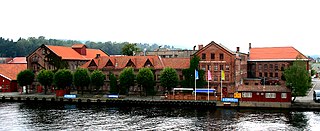 W
WPorsgrund Porcelain Factory is a porcelain flatware company located at Porsgrunn in Telemark county, Norway.
 W
WRörstrand porcelain was one of the most famous Swedish porcelain manufacturers, with production initially at Karlbergskanalen on the island of Kungsholmen in Stockholm.
 W
WSoft-paste porcelain is a type of ceramic material in pottery, usually accepted as a type of porcelain. It is weaker than "true" hard-paste porcelain, and does not require either the high firing temperatures or the special mineral ingredients needed for that. There are many types, using a range of materials. The material originated in the attempts by many European potters to replicate hard-paste Chinese export porcelain, especially in the 18th century, and the best versions match hard-paste in whiteness and translucency, but not in strength. But the look and feel of the material can be highly attractive, and it can take painted decoration very well.
 W
WSpa cup is a special shape of porcelain cup, with a spout leading from low down in the body, so that the vessel looks like a cross between a cup and a teapot. They are used to drink mineral or thermal water directly from the spring. According to the Czechs, spa cups were developed in north-west Bohemia in the spa region around the well known spas such as Karlovy Vary, Mariánské Lázně and Jáchymov. Originally people drank spa water using glasses. The development of spa cups started in the 17th century and went through a variety of materials, shapes and decorations.
 W
WSyracuse China, located in Lyncourt, New York, was a manufacturer of fine china. Founded in 1871 as Onondaga Pottery Company in the town of Geddes, the company initially produced earthenware; in the late 19th century, O.P.Co., began producing fine china, for which it found a strong market particularly in hotels, restaurants, and railroad dining cars. The company closed in 2009.
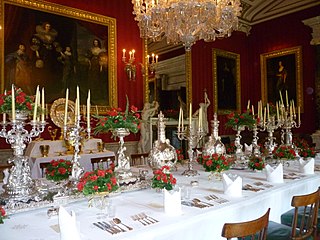 W
WTableware are the dishes or dishware used for setting a table, serving food and dining. It includes cutlery, glassware, serving dishes and other items for practical as well as decorative purposes. The quality, nature, variety and number of objects varies according to culture, religion, number of diners, cuisine and occasion. For example, Middle Eastern, Indian or Polynesian food culture and cuisine sometimes limits tableware to serving dishes, using bread or leaves as individual plates. Cups are not dishes. Special occasions are usually reflected in higher quality tableware.
 W
WTalavera pottery is a Mexican and Spanish pottery tradition from Talavera de la Reina, in Spain. The Mexican pottery is a type of majolica (faience) or tin-glazed earthenware, with a white base glaze typical of the type. It comes from the town of San Pablo del Monte and the cities of Puebla, Atlixco, Cholula, and Tecali, because of the quality of the natural clay found there and the tradition of production which goes back to the 16th century. Much of this pottery was decorated only in blue, but colors such as yellow, black, green, orange and mauve have also been used. Majolica pottery was brought to Mexico by the Spanish in the first century of the colonial period. Production of this ceramic became highly developed in Puebla because of the availability of fine clays and the demand for tiles from the newly established churches and monasteries in the area. The industry had grown sufficiently that by the mid-17th century, standards and guilds had been established which further improved the quality, leading Puebla into what is called the "golden age" of Talavera pottery. Formally, the tradition that developed there is called Talavera Poblana to distinguish it from the similarly named Talavera pottery of Spain. It is a mixture of Italian, Spanish and indigenous ceramic techniques.
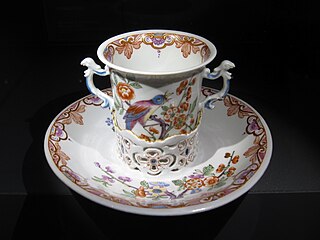 W
WTrembleuse or Tasse Trembleuse also Gobelet et soucoupe enfoncé is a drinking cup and saucer which originated in Paris in the 1690s.
 W
WUriarte Talavera is a traditional Talavera enterprise in the city of Puebla, Mexico, which has been in existence since 1824. It was begun as a family workshop by Dimas Uriarte, but today it is run by a business group. However, the enterprise still makes Talavera pottery using 16th century methods. Much of its work still uses traditional colors and designs, and eligible for certificates of authenticity by the Mexican government, but it has also experimented with new designs and forms since the early 20th century. This has included collaborating with various plastic artists to create modern designs and even artistic pieces.
 W
WVezzi porcelain is porcelain made by the Vezzi porcelain factory in Venice, Italy, established in 1720 by the Vezzi family. It was the first porcelain factory in Italy, after the experimental Medici porcelain of the 16th century. It operated only until 1727, so surviving pieces are few, probably fewer than 200. It made "true" hard-paste porcelain, and was only the third factory in Europe to do so, hiring technicians from Meissen porcelain and Vienna porcelain, the first two makers.
 W
WA china fairing is a small porcelain ornament, often incorporating figures, ranging from about three inches (7.5 cm) to about five inches (12.5 cm) in height, and depicting a variety of scenes, humorous, political or domestic. The ornament almost always incorporates a base and many fairings have a caption describing the scene or making some point inscribed on that base. Although the majority of fairings are simply decorative, they were occasionally made in the form of pinboxes, matchstrikers or holders for watches or small mirrors. Some fairings were made in pairs, for example, "Grandpapa - Grandma", two separate statuettes of a small boy and girl, each dressed in adults' clothing.
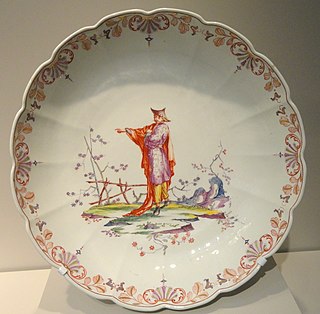 W
WVienna porcelain is the product of the Vienna Porcelain Manufactory, a porcelain manufacturer in Alsergrund in Vienna, Austria. It was founded in 1718 and continued until 1864.
 W
WThe Vienna Porcelain Manufactory Augarten is a porcelain manufactory located in Vienna, Austria.
 W
WDmitry Ivanovich Vinogradov was a Russian chemist who developed Russian hard-paste porcelain; he was the founder of the Imperial Porcelain Factory.
 W
WVista Alegre is a Portuguese porcelain manufacturer located in Ílhavo in the district of Aveiro.
 W
WThe Willow pattern is a distinctive and elaborate chinoiserie pattern used on ceramic kitchen/housewares. It became popular at the end of the 18th century in England when, in its standard form, it was developed by English ceramic artists combining and adapting motifs inspired by fashionable hand-painted blue-and-white wares imported from China. Its creation occurred at a time when mass-production of decorative tableware, at Stoke-on-Trent and elsewhere, was already making use of engraved and printed glaze transfers, rather than hand-painting, for the application of ornament to standardized vessels.
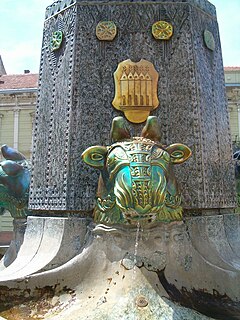 W
WZsolnay, or formally Zsolnay Porcelánmanufaktúra Zrt is a Hungarian manufacturer of porcelain, tiles, and stoneware. The company introduced the eosin glazing process and pyrogranite ceramics.
 W
W W
W